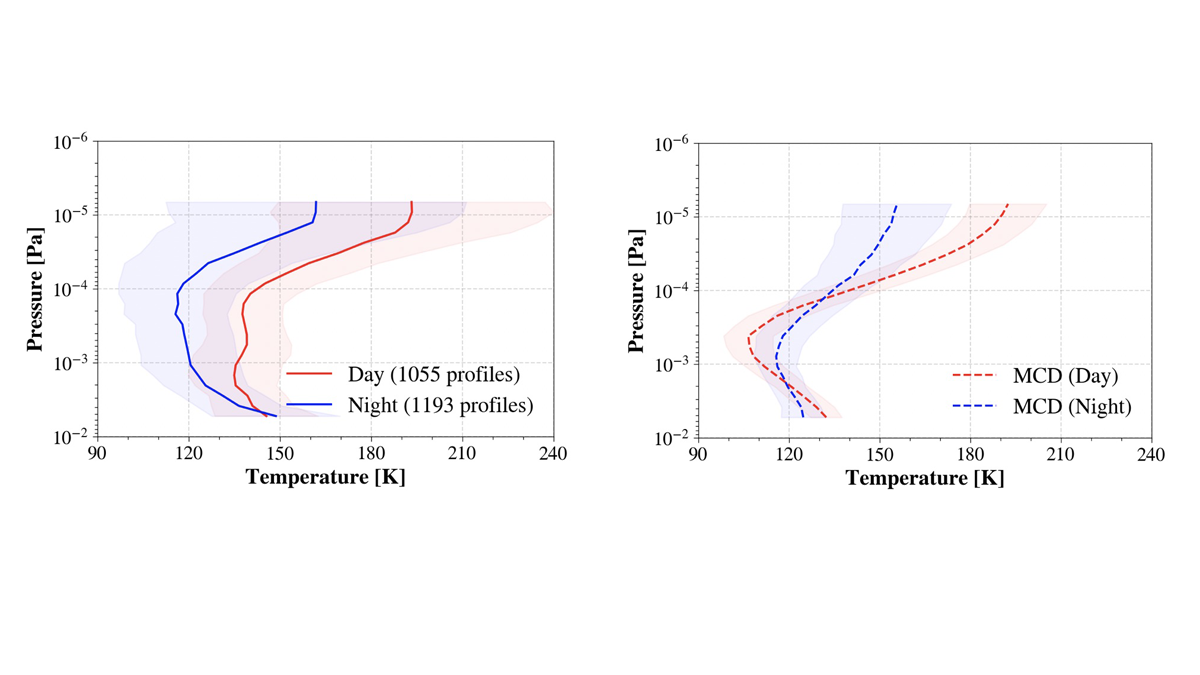Editors’ Highlights are summaries of recent papers by AGU’s journal editors.
Source: Journal of Geophysical Research: Planets
The upper and lower atmospheres of Mars are relatively well-known owing to the extensive in-situ measurements made on board various orbiters and landers over the past several decades. In contrast, the middle atmosphere, which includes the so-called mesopause region as the interface between the mesosphere and thermosphere, has been poorly explored so far. However, understanding this region is important because it is influenced by both wave perturbations from below and solar radiation from above.
Gupta et al. [2022] used the ultraviolet spectrometer on board the Mars Atmosphere and Volatile Evolution (MAVEN) orbiter to reveal in detail the thermal structure in this under-explored critical region of the Martian atmosphere. The presence of a warmer mesopause on the dayside than on the nightside was established firmly from data for the first time. Measurements wonderfully illustrate the role of solar irradiance as the prime energy source. In contrast, the evidence for the impact of migrating tidal waves that propagate vertically upward from the lower atmosphere is vague. These findings are inconsistent with the prediction from the widely used Mars Climate Database, implying that our current understanding of the dynamics and structure of the Martian middle atmosphere is inadequate and remains to be improved.
Citation: Gupta, S., Yelle, R. V., Schneider, N. M., Jain, S. K., González-Galindo, F., Verdier, L., et al. (2022). Thermal structure of the Martian upper mesosphere/lower thermosphere from MAVEN/IUVS stellar occultations. Journal of Geophysical Research: Planets, 127, e2022JE007534. https://doi.org/10.1029/2022JE007534
—Jun Cui, Associate Editor, JGR: Planets

